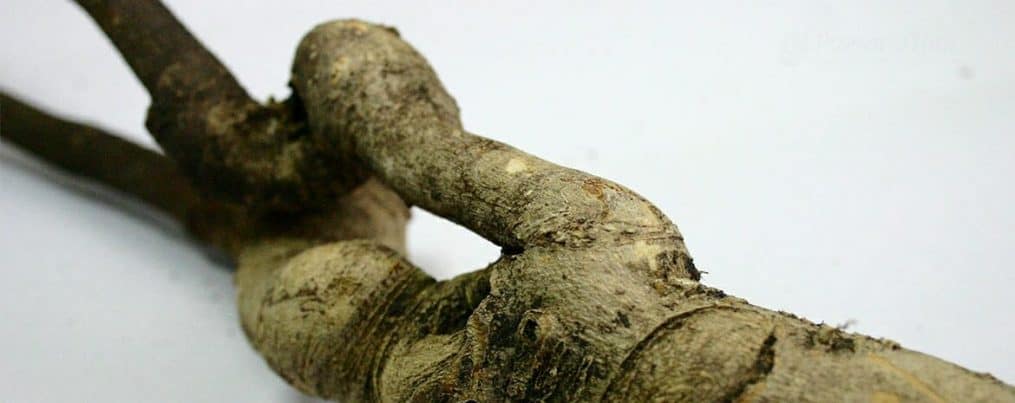Eurycoma Longifolia Uses
Eurycoma Longifolia Uses
Scientific Name(s): Eurycoma longifolia Jack. Family: Simaroubaceae
Common Name(s): Tongkat Ali (Malaysia), Pasak bumi (Indonesia), Cay Ba Binh (tree that cures hundred of diseases), Malaysian ginseng
Uses
In vitro studies have been carried out on the plant’s antimalarial, antiulcer, antipyretic, and aphrodisiac activity as well as cytotoxic activity against cancer cells.
Dosing
There is no clinical evidence to support specific doses of E. longifolia .
Contraindications
Contraindications have not yet been identified.
Pregnancy/Lactation
Avoid use because of lack of clinical data regarding safety and efficacy in pregnancy and lactation.
Interactions
None well documented.
Adverse Reactions
No information is available about the adverse effects of E. longifolia .
Toxicology
No information is available about toxicity in E. longifolia in humans.
Botany
The Simaroubaceae family consists of 30 genera and 200 species. E. longifolia is a tall, slender shrubby tree found on sandy soil. The plant is indigenous to Southeast Asia, including Myanmar, Thailand, Laos, Cambodia, and Malaysia.
History
A decoction of the roots, root bark, or bark is consumed by mouth to treat numerous conditions, including diarrhea, fever, glandular swelling, bleeding, dropsy, persistent cough, hypertension, relief of pain in the bones, and tertian malaria. The bark also has been used topically to treat wounds, ulcers, syphilitic sores, and headache. The plant is primarily known in commerce for its aphrodisiac properties.
Chemistry
There are numerous reviews and phytochemical studies on E. longifolia . The plant’s pharmacological activity is attributed to various quassinoids, squalene derivatives, biphenylneolignans, tirucallane-type triterpenes, canthine-6-1, and beta-carboline alkaloids.
Quassinoids, including eurycomanol, eurycomanol-2-O-beta-D-glycopyranoside, 13 beta, 18-dihydroeurycomanol, 14,15p-dihydroxyklaineanone, and 6 alpha-hydroxyeurycomalactone, have been isolated from the roots. Pasakbumin A-D (also known as eurycomanones) have been isolated.
Squalene derivatives include eurylene, 14-deacetyl eurylene, longilene peroxide, and teurilene.
Biphenylneolignans include the following: 2 isomeric 2,2-dimethoxy-4-(3-hydroxy-1-propenyl)-4-(1,2,3-trihydroxypropyl) diphenyl ethers and 2 biphenyls, 2-hydroxy-3,2,6-trimethoxy-4-(2,3-epoxy-1-hydroxypropyl)-5-(3-hydroxy-1-propenyl)-biphenyl and 2-hydroxy-3,2-dimethoxy-4-(2,3-epoxy-1-hydroxypropyl)-5-(3-hydroxy-1-propenyl)-biphenyl. Alkaloids include 9,10-dimethoxycanthin-6-one, 10-hydroxy-9-methoxycanthin-6-one, 11-hydroxy-10-methoxycanthin-6-one, 5,9-dimethoxycanthin-6-one and 9-methoxy-3-methylcanthin-5,6-dione.
Uses and Pharmacology
In vitro studies on the plant have examined antimalarial, antiulcer, antipyretic, and aphrodisiac activity as well as cytotoxic activity against cancer cells.
Antimalarial activity
Eurycomalactone prolonged the survival time of mice infected with Plasmodium berghei at a concentration of 2.5 mg/kg. However, this concentration caused early death in the test animals. Additional experiments using a 34% alcoholic extract, water extract, n-hexane fraction, chloroform fraction, and 95% ethanolic fraction also proved toxic to the test animals. In vitro antimalarial activity was found against P. berghei at an inhibitory concentration of 4.5 × 10 −7 g/mL.
Antiulcer and antitumor activity
The quassinoid 14,15 beta-dihydroxyklaineanone inhibited tumor promoter-induced Epstein-Barr virus activation at an in vitro IC50 of 5 mcm. Two quassinoids, pasakbumin-A (also known as eurycomanone) and -B, exhibited antiulcer activity.
Anxiolytic activity
The antianxiety effect of various fractions of E. longifolia was investigated in mice using various behavioral tests, including the open field (emotional state), elevated plus-maze (anxiolytic and anxiogenic drug effects), and anti-fighting. The plant’s anxiolytic effect was similar to the diazepam positive control.
Antihyperglycemic activity
Blood glucose decreased in streptozotocin-induced hyperglycemic adult rats after treatment of 150 mg/kg body weight using aqueous extracts of E. longifolia . Blood glucose levels decreased 38% ( p < 0.05) and 47% ( p < 0.001) for 2 different extracts.
Aphrodisiac activity
The effects of E. longifolia extract were studied on the initiation of sexual performance in rats. A dosage of 200, 400, and 800 mg/kg body weight of the extract was administered orally twice daily for 10 days and continued throughout the 1-month testing period. Testosterone was used as a positive control at 15 mg/kg. E. longifolia promoted the growth of both ventral prostate and seminal vesicles as compared with the control, but less than that of the testosterone-treated group. Other studies have found similar results.
Dosage
There is no clinical evidence to support specific doses of E. longifolia .
Pregnancy/Lactation
Avoid use because of lack of data regarding safety and efficacy in pregnancy and lactation.
Interactions
None well documented.
Adverse Reactions
No information is available about the adverse effects of E. longifolia .
Toxicology
No information is available about the toxicity of E. longifolia in humans. However, the LD 50 for an oral dose of E. longifolia alcoholic extract in mice was 2.6 g/kg; symptoms of acute toxicity included depression, shallow respiration, and convulsion. Ninety-five percent of the mice died at a dose of 0.43 g/kg, and increased weights of the liver, kidneys, spleen, and testes were observed.
One product, M-Tongkat Ali , harvested and prepared in Malaysia, was found to have higher than normal traces of lead (10.64 +/− 0.37ppm of lead).
Eurycoma Longifolia Uses

